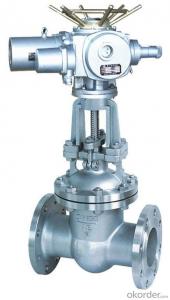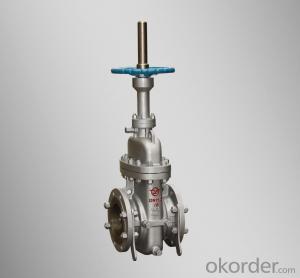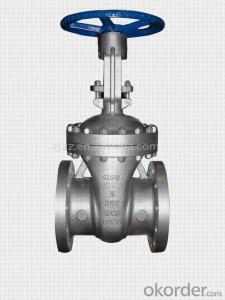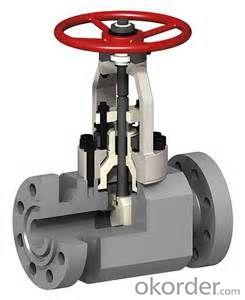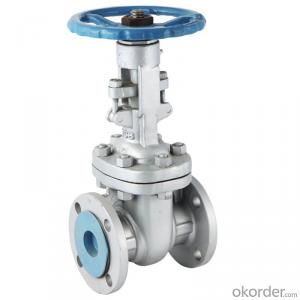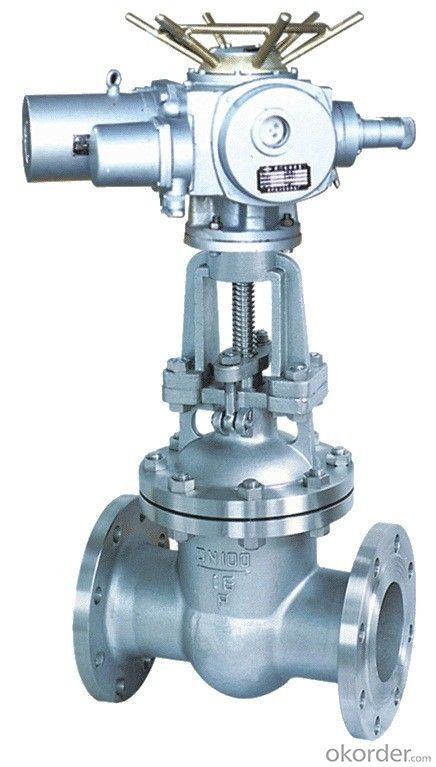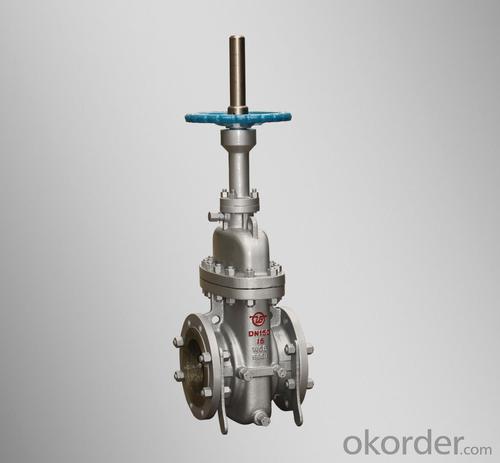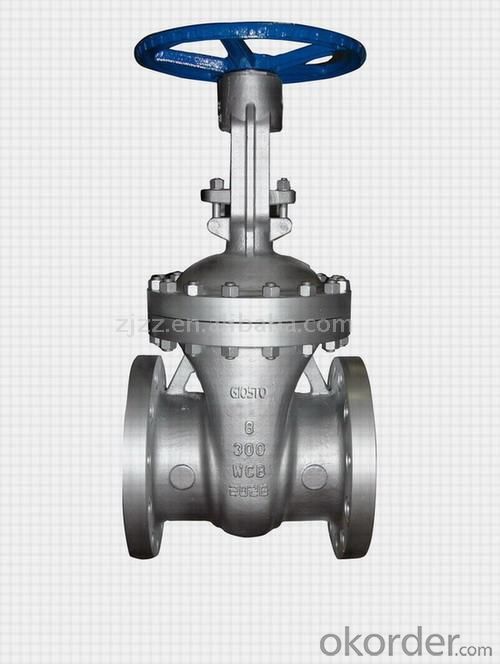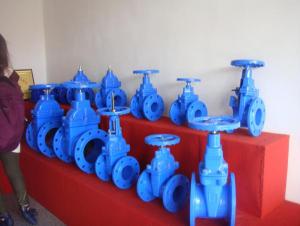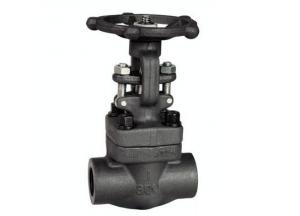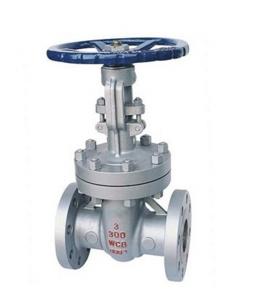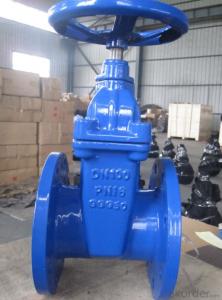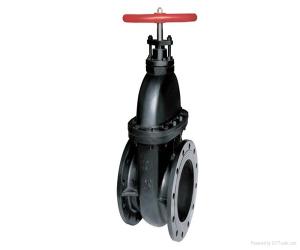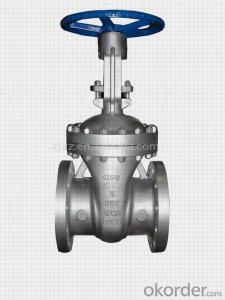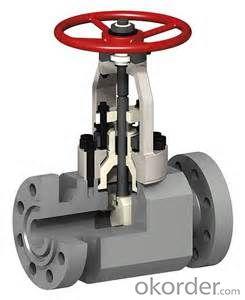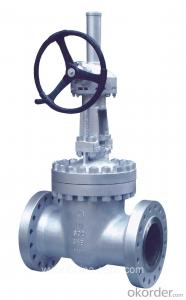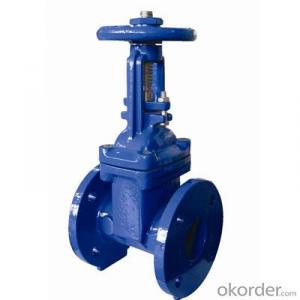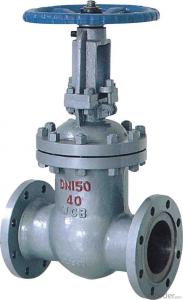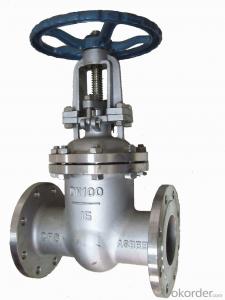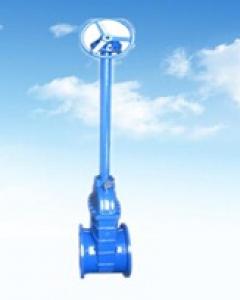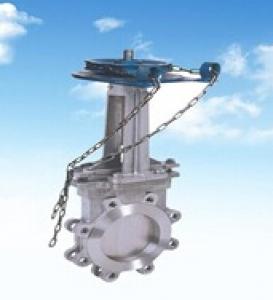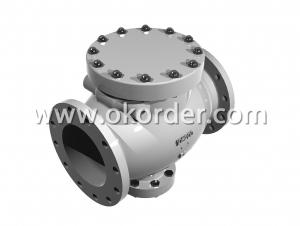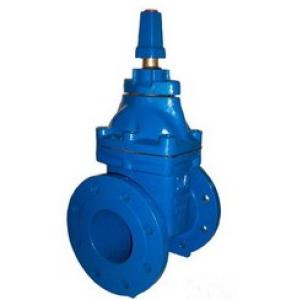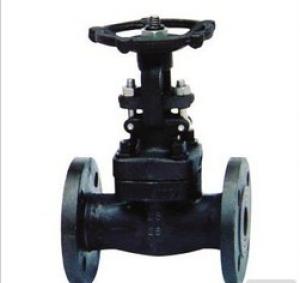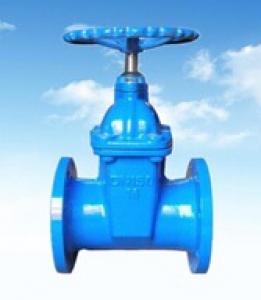Gate Valve Non-rising Stem with High Quality from China
- Loading Port:
- Tianjin
- Payment Terms:
- TT OR LC
- Min Order Qty:
- 100 pc
- Supply Capability:
- 10000 pc/month
OKorder Service Pledge
OKorder Financial Service
You Might Also Like
1.Structure of Gate Valve Description:
A gate valve, also known as a sluice valve, is a valve that opens by lifting a round or rectangular gate/wedge out of the path of the fluid. The distinct feature of a gate valve is the sealing surfaces between the gate and seats are planar, so gate valves are often used when a straight-line flow of fluid and minimum restriction is desired. The gate faces can form a wedge shape or they can be parallel. Gate valves are primarily used to permit or prevent the flow of liquids, but typical gate valves shouldn't be used for regulating flow, unless they are specifically designed for that purpose. Because of their ability to cut through liquids, gate valves are often used in the petroleum industry. For extremely thick fluids, a specialty valve often known as a knife valve is used to cut through the liquid. On opening the gate valve, the flow path is enlarged in a highly nonlinear manner with respect to percent of opening. This means that flow rate does not change evenly with stem travel. Also, a partially open gate disk tends to vibrate from the fluid flow. Most of the flow change occurs near shutoff with a relatively high fluid velocity causing disk and seat wear and eventual leakage if used to regulate flow. Typical gate valves are designed to be fully opened or closed.When fully open, the typical gate valve has no obstruction in the flow path, resulting in very low friction loss.
2. Main Features of the Gate Valve:
• Valve body cavity using non-toxic epoxy resin,both inside and outside flashboard completely is coated with rubber
• Free of water pollution
• High manufacturing accuracy
• High strength
• Environmental protection and energy saving
• Good visual effect
3. Images
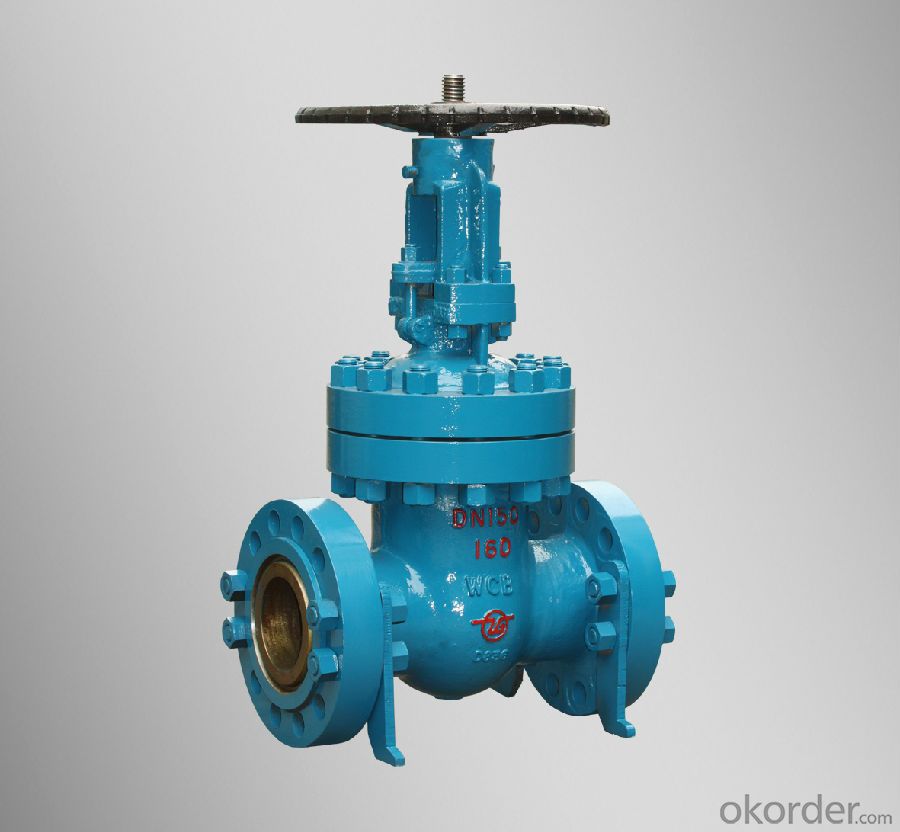
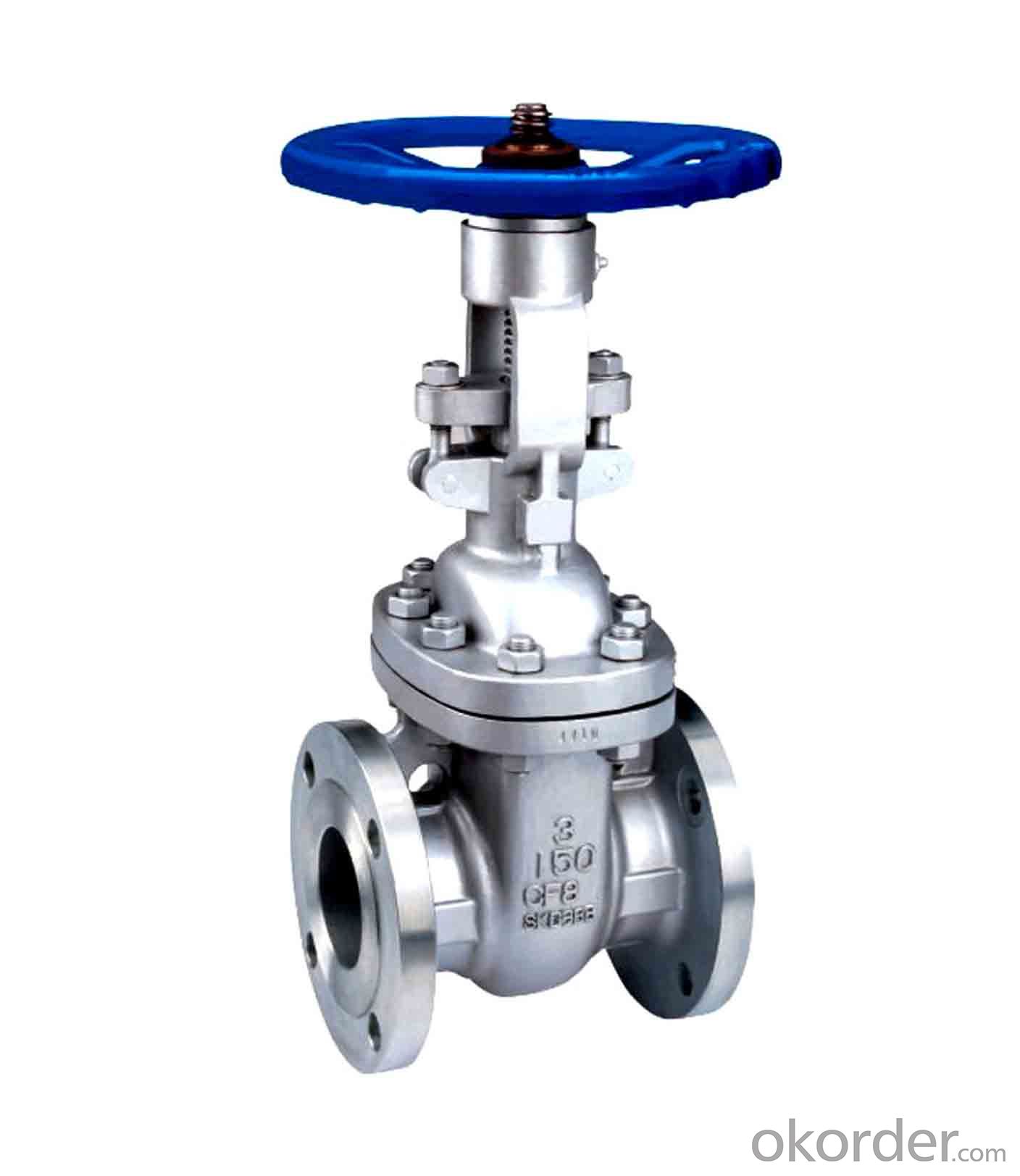
4. Gate valve Specification

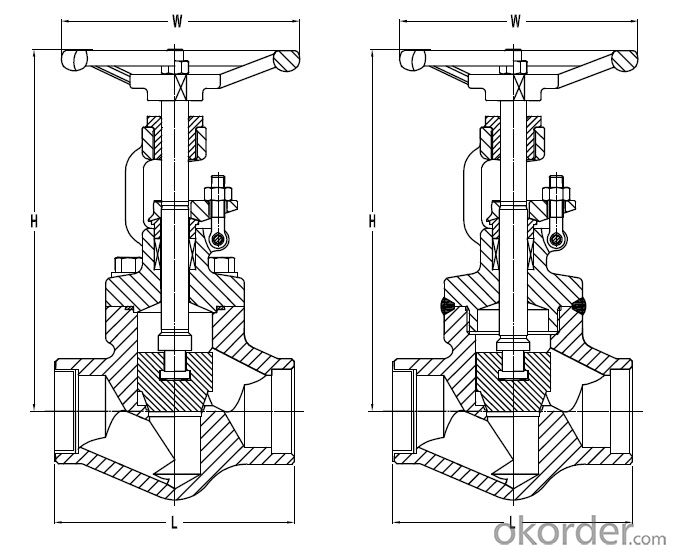
5.FAQ
1. What's are the characteristics of gate valve?
The distinct feature of a gate valve is the sealing surfaces between the gate and seats are planar, so gate valves are often used when a straight-line flow of fluid and minimum restriction is desired. The gate faces can form a wedge shape or they can be parallel.
2. What is the work principle of gate valve ?
The gate faces can form a wedge shape or they can be parallel. Gate valves are primarily used to permit or prevent the flow of liquids, but typical gate valves shouldn't be used for regulating flow, unless they are specifically designed for that purpose. Because of their ability to cut through liquids, gate valves are often used in the petroleum industry.
3. What is the structure?
Bonnets provide leakproof closure for the valve body. Gate valves may have a screw-in, union, or bolted bonnet. Screw-in bonnet is the simplest, offering a durable, pressure-tight seal. Union bonnet is suitable for applications requiring frequent inspection and cleaning. It also gives the body added strength. Bolted bonnet is used for larger valves and higher pressure applications.
- Q: What is the difference between the cut-off valve and gate valve, the general will use the cut-off valve instead of gate valve
- Stop valve and gate valveThe working principle is different. The stop valve is an upward stem type, and the handwheel rotates and rises with the stem. Valve is hand wheel rotation, stem upward movement. Flow is not the same, the gate valve requires full open, the cut-off valve is not the same. The gate valve has no inlet and outlet direction requirements, and the cut-off valve has the required inlet and outlet!Gate valve and stop valve are shut-off valve, is the most common two valves.From the exterior, the gate valve is shorter than the cut-off valve, especially the bar valve needs a higher height space. Valve sealing surface has a certain degree of self sealing capacity, its spool depends on the media pressure tight contact with the valve seat sealing surface, to achieve tight leakage. Wedge gate valve spool angle is generally 3~6 degrees, when forced to shut down excessive or temperature changes of the valve core is easy to die. Therefore, high temperature and high pressure wedge gate valve, in the structure have taken certain measures to prevent spool stuck. The valve in the opening and closing valve and valve seat sealing surface contact and mutual friction is always so easy to wear sealing surface, especially in close off the valve, the valve before and after the great pressure, sealing surface wear is more serious.
- Q: What is gate valve (with force transfer joint)?
- Flange valve is equipped with a force expansion joints, easy installation
- Q: Gate valve Z41H-16Q generally used for what place?
- It is a standard flanged gate valve with engineering pressure 1.6MPa. Generally used in chemical processes, of course, can also be used for municipal and civil engineering. The valve is generally used for cutting occasions fully open or fully closed, is not suitable for flow regulation.
- Q: The difference and use of gate valve and stop valve
- Generally large and nominal caliber DN50 mostly with gate valve, especially industrial high temperature, high pressure, highly toxic and so on.Stop valve is able to stop and adjust flow, small footprint, small size, generally less than the nominal diameter, DN50 occasions use it. Two can be closed, in the flow of linear requirements are not high, you can adjust the flow. Just because of its structural characteristics of the valve to make its flow resistance, so there is a demand for throttling with a little more than the gate valve. In addition, the cut-off valve, whether it is a formal or reverse installed, in the opening and closing process, there is always a very difficult, and therefore can not do a great deal, or it is not easy to open and close. In addition, the cut-off valve has a one-way sealing effect of good features, so in the prevention of reverse flow of the working fluid, it also has a place to play.Hope to be of some help to you!
- Q: Please tell the specific specifications and specifications of the gate valve and advise the principle of management cooperation Thank you
- Please tell the specific specifications and specifications of the gate valve and advise the principle of management cooperation Thank you
- Q: Z41T one 10 gate valve and Z44T one, 10 gate valve difference
- Z41T one, 10 is single gate, Z44T one, 10 is double gateAccording to the provisions of the JB/T 308-2004 valve type programming method:Z== gate valve4== connection: flange type1== structure: Rigid single gate4== structure: Rigid double gateT== sealing surface material: copper alloy10== pressure rating: 1.0MPa
- Q: Gate valve z45h-10dn250 length of the body?
- Z45h-10dn250 body length L=330mm, this valve is hidden bar, elastic seat, sealing gate valve, gate lining, lining fluorine, belong to soft seal
- Q: What does valve qz45x - 10q mean?
- Crown valve pressWhat does Q stand for? I'm not sure. It's probably made of ductile iron"Z" means "gate valve"4 represents flange connection5 represents the dark bar (1 represents the Ming pole)X stands for rubber seal and soft seal10q stands for 10 pressure
- Q: About fire valve is gate valve or butterfly valve problems?
- Disease is generally in accordance with the design requirements, regardless of the butterfly or tie hair to meet the requirements, are two-way valve.
- Q: What is an inverted seal gate valve?
- The inverted sealing gate valve is provided with an inverted sealing device, and when the valve is fully opened, an inverted seal is formed, and the filling can be changed under the normal operation of the system.
Send your message to us
Gate Valve Non-rising Stem with High Quality from China
- Loading Port:
- Tianjin
- Payment Terms:
- TT OR LC
- Min Order Qty:
- 100 pc
- Supply Capability:
- 10000 pc/month
OKorder Service Pledge
OKorder Financial Service
Similar products
Hot products
Hot Searches
Related keywords
